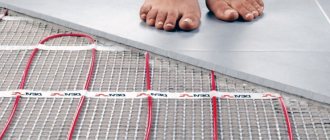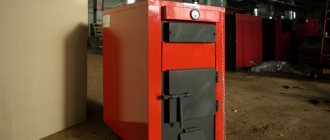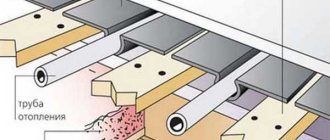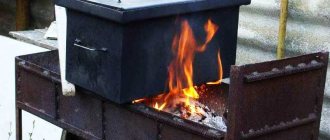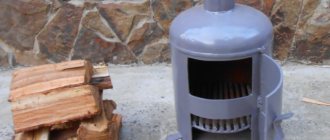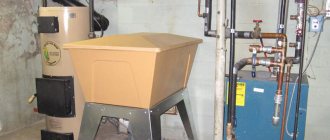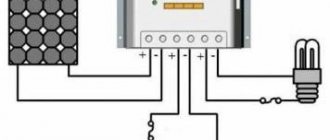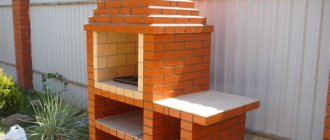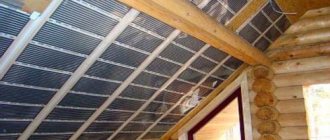28.05.2019
Do-it-yourself insulation with polyurethane foam? If you don't have any special construction skills? Nonsense? A large amount of practically unused space on a balcony or loggia can be easily used to arrange a study or a flower greenhouse. Provided that work is carried out to insulate them, this is more than realistic. Afterwards, all that remains is to lay a layer of thermal insulation. What material should I choose for this? Many professional builders recommend using polyurethane foam for work. Is this really a way out? What is known about this type of thermal insulation material?
Polyurethane foam - what is it?
Few people know, but polyurethane foam (PPU), which is in demand today, was manufactured back in the last century. It was first used as thermal insulation in 1957. Since then, it has not only not lost its relevance, but has also begun to be used in other areas far from construction. It is polyurethane foam that is one of the fillers in upholstered furniture, children's toys, etc. What is polyurethane foam?
At its core, polyurethane foam is one of the types of plastics. The uniqueness of the material lies in the fact that the main percentage of the substance is gas bubbles. According to studies that have been repeatedly carried out with the finished product, modified plastic in the finished product is only 10-15%. The rest of the space is occupied by gas bubbles. As a result, the material acquires special thermal insulation and performance characteristics.
. Namely:
- A 3 cm layer of polyurethane foam is identical in thermal conductivity to 7 cm, 16 cm mineral wool, 38 cm foam block and 1 m 70 cm brick wall.
- The material can be prepared directly at the construction site or purchased ready-made mixture in cylinders.
- Tests have shown that polyurethane foam retains its performance characteristics over a range of - 150° to + 220°.
- Has high adhesion to any surface
. Using polyurethane foam you can even insulate a metal structure. - After drying, the surface can be plastered or used as a base for laying ceramic tiles.
You need to know that there are several methods of insulation using polyurethane foam. You can purchase sheet material, prepare a two-component composition yourself, or use a ready-made mixture sold in containers resembling polyurethane foam.
Passage through a wooden floor
As a rule, the most common material when building a bathhouse is wood. Therefore, when passing a chimney through a ceiling, it is necessary to use a passage unit.
Below we will look at the main options for the passage duct, based on the material of the chimney itself.
Use of brick structures
If you have a brick chimney in your bathhouse, then the cutting of the chimney on the ceiling is made of brick by thickening it at the passage points. The height of this section of the masonry must be at least three rows of bricks.
Laying out a stove chimney is a complex process, since errors during construction can lead to poor draft and a fire. Therefore, it is better to entrust this matter to specialists.
Plasterboard box
The passage box can be made from heat-resistant plasterboard. To do this, you will need to prepare insulation from mineral wool or asbestos. This option is made in the same way as in the case of a metal box. The first step is to install plasterboard walls, and fill the space between them with insulation.
Expanded clay can be poured on top of the cotton wool or even instead of it, which gets clogged into all pores and provides additional insulation.
Metal box
A more popular alternative to passing through wooden floors has become the use of a stainless steel ceiling-pass assembly. It is a box made of several steel plates; a hole is made in one of the walls based on the diameter of the outer contour of the sandwich. The void between the pipe and the box is filled with heat-insulating material.
Ceiling cutting for sandwich pipes is found in GOST and conventional. They differ in the size of the hole. According to GOST, it is necessary to cut a square measuring 1.0 by 1.0 m in the ceiling or wall, into which the polyurethane foam will be directly inserted. However, this size is not particularly popular, since then it is necessary that the distance between the logs in the bathhouse be 1.0 x 1.0 m, otherwise it is very difficult to insert such a unit.
A regular knot is a square measuring 48-50cm. To determine the size of the cut, you need to start from the diameter of the sandwich:
- if more than 200mm, then the correct size is 1.0x1.0m;
- if 200 mm – 48-50cm.
Important information: if the chimney is for a fireplace, then the size of the cut must be 1.0 x 1.0 m.
When installing the box, foil insulation is glued to all points of contact with wooden surfaces.
Advantages of polyurethane foam insulation
Although polyurethane foam has been used as thermal insulation for more than half a century, it has only recently become widespread. It is not surprising that for domestic consumers this method of insulation is new, and accordingly raises many questions and disputes. Is it really more practical and economical to use polyurethane foam compared to, for example, mineral wool? Let's look at the advantages:
1. Easy to do DIY
insulation with polyurethane foam. To do this, there is no need to make a metal frame as is the case with mineral insulation, attach sheets of material using special adhesives, and even prepare the surface. Simply apply the mixture to the wall, like polyurethane foam.
2. Thermal insulation characteristics
. Even extruded polystyrene foam cannot compare with polyurethane foam in this regard. And if you consider that after insulation all the cracks are completely filled and there are no cold bridges that necessarily accompany any sheet heat-insulating material, the advantage of polyurethane foam becomes obvious.
3. Does not require additional work
. After applying it, you can safely carry out the rest of the finishing: plaster, tiling, plastic and other materials.
4. Speed of work completion
. Application is fairly quick. To insulate a balcony, even with your own efforts and without professional equipment, it will only take one day.
5. Possibility of application on uneven surfaces
. Any sheet insulation requires that the surface be completely leveled before installation. PPU can be applied to any type of wall with any irregularities, cracks, etc.
Attention: The most advantageous is the use of two-component formulations. Even taking into account the purchase of tools, the costs per 1 sq. m. will be significantly lower than when purchasing a ready-made mixture in cylinders.
Do you want to perform polyurethane foam insulation yourself? Get the right tool.
Unless insulation is planned with sheet polyurethane foam, then the use of special equipment will be required. Moreover, such a tool will need to be purchased regardless of what type of polyurethane foam (two-component or ready-made mixture) will be used for insulation. To carry out polyurethane foam thermal insulation yourself you will need:
- Gun for ready mix. A completely ready-made mixture for application without the need for pre-mixing has appeared on the building materials market. It is sold in cylinders, much like polyurethane foam. With its help, you can apply a layer up to 4 cm thick in one pass. The consumption is approximately one can per 1 sq. m. m. A regular foam mounting gun is not suitable for spraying polyurethane foam!
- Disposable equipment for applying polyurethane foam. At its core, a polyurethane spraying installation consists of two conventional cylinders. They contain the main components of polyurethane foam under pressure. The cylinders are connected to a spray gun that has several different attachments to perform specific functions.
Note: There is professional low and high pressure equipment. It is designed for simultaneous processing of large surfaces. Usually it is used by installation teams; there is no need to purchase it, only for insulating a balcony or loggia.
Required materials and tools
To insulate walls, you need to purchase a set of equipment along with components and materials for lathing, as well as vapor and waterproofing. A complete list of everything necessary to perform thermal insulation work is as follows:
- professional equipment for applying insulation (containers with components A and B, compressor station, heating unit with dispenser, supply hoses, spray gun, set of nozzles);
Technological line for spraying polyurethane foam.
Modern spraying stations.
- disposable semi-professional equipment if it is not possible to rent a professional station (pressure cylinders with components, hoses, spray gun, nozzles, a tank of pressurized water for flushing the gun from foam);
Disposable equipment.
For reference: one set is enough for 20 m2 with a layer thickness of 50 mm.
- vapor barrier film (type B);
- windproof membrane (type A or AM);
- timber for sheathing 40x60 mm;
- rail for counter-lattice 30x50 mm or 40x50 mm;
- self-tapping dowel;
- wood screws;
- hammer drill or electric drill;
- wood hacksaw;
- screwdriver;
- roulette;
- construction stapler;
- knife with replaceable blades.
In addition, in all cases, personal protective equipment will be required: a protective suit, a respirator, goggles, and hand protection.
Polyurethane foam - do-it-yourself spraying
Spraying any type of polyurethane foam is carried out simply and without unnecessary complications. So, any person who has experience in applying polyurethane foam will be able to cope with the independent insulation of a balcony or loggia with polyurethane foam. To do this you will need the following:
- Wear protective clothing that you won’t mind throwing away and protective equipment.
- Start applying the composition, starting from the edge, gradually filling the space.
- If necessary, after the polyurethane foam has dried, a second layer can be applied.
- Enjoy the finished result.
Considering the ease of spraying, the possibility of finishing work directly on the surface of the applied material after hardening, as well as high thermal insulation characteristics, it becomes clear that polyurethane foam has no competitive analogues in the field of thermal insulation materials, at least for today.
The procedure for installing the passage unit through the ceiling
The process of attaching the protective box itself is usually not difficult. To do this, we perform a simple sequence of actions:
- the ends are covered with thermal insulation material;
- in the passage box for the chimney, all parts in contact with the ceiling elements, as well as its bottom, are insulated;
- the pipe is carefully inserted, but it should not fit tightly to the walls;
- we secure the assembly using self-tapping screws or other fasteners;
- insulation is carried out in the attic, and the voids are filled with loose mass;
- If desired, you can decorate the structure.
DIY polyurethane foam spraying video
We invite you to watch a video on the topic of our article, in which you can see how easily and quickly you can insulate polyurethane foam with your own hands.
Still have questions? Ask them in the comments!
The issue of insulation of residential buildings is relevant in almost all regions of Russia. Spraying polyurethane foam is an effective solution to the problem. This insulation is a two-component composition.
Very low, it is only 0.021 W/m 2 K. A layer of polyurethane foam 0.05 m thick has the same thermal conductivity properties as 1.6 m of brickwork. In addition, the material is very light. All this explains its wide popularity among builders of various profiles.
Thickness of applied layer
To insulate the wall, it is enough to apply a thermal insulation layer 50 mm thick. However, it will not be possible to spray over the entire surface with such precision. Therefore, professionals advise working within the range of 50-60 mm, where the minimum thickness of the thermal layer is 50 mm, the maximum is 60 mm. Foam that protrudes strongly beyond the sheathing is cut off with a knife. The data is given for a brick wall of one and a half bricks.
In all other cases you need to count. To do this, you can use an online calculator (see here) or do the calculations yourself.
Insulation density
The density can be adjusted simultaneously in several ways: by changing the proportions of the components, within hundredths of a percent, by the speed and force of foam supply. Therefore, it will not be difficult for an experienced specialist to adjust the equipment to the required density. And for walls it is about 40 kg/m3.
Advantages of polyurethane foam insulation
1. Low heat loss coefficient of the building.
2. Resistance to negative environmental factors.
3. Excellent long-lasting adhesion to all types of brick and drywall.
4. There is no need to secure the thermal insulation with fasteners.
5. Polyurethane foam has excellent hydrophobicity.
6. Possibility of monolithic distribution of the material, that is, without visible seams.
7. Insulation with polyurethane foam by spraying does not require periodic restoration. This significantly saves labor resources.
8. The material consists of cells that allow it to “breathe”.
Selection of material for thermal insulation
There are several types of thermal insulation materials for any occasion. Let's look at the most popular of them.
- Technical basalt wool is used most often. Obtained by melting certain rocks. In addition to low thermal conductivity, it also retains moisture and can withstand high temperatures from 700° to 900°.
- Kaolin wool is produced by melting silicon oxide materials at a temperature of 1750°. It has a low thermal conductivity coefficient and does not melt or crumble at high temperatures. Maximum temperature of use is 1100-1250°. It has a long service life and can withstand many starts and cool-downs without losing its qualities.
- Construction basalt wool is obtained by melting mica. The operating temperature of such thermal insulation is 400-450°.
If you find it difficult to choose, it is recommended to order mineral wool. Since such a product is time-tested, universal in use and widely available on sale.
In this article we looked at how to make a passage unit for a chimney through the roof and other slabs. Any person skilled in handling hand tools can do this. To do this, take the time to familiarize yourself with all the rules and strictly follow all the points specified in the instructions.
If you are not confident in your abilities or want to save time, then it is better for you to seek help from a professional who has extensive experience in this field.
Polyurethane foam spraying technology
Before insulation is carried out by spraying polyurethane foam, you need to prepare the surface to be treated. To do this, clean it from dirt and dry it well. It is important to remove all rust from metals and degrease them. Aluminum requires mandatory coating with a primer with a high degree of adhesion, this will help increase the adhesion of the insulation to the surface.
The temperature of the environment and components plays an important role in the spraying process. To obtain a highly effective layer, the composition must be between 10 and 25°C. The optimal temperature for the room is above +5 °C. Work in a colder environment can only be done with a solution heated to the desired state.
Spraying of polyurethane foam, reviews of which are almost always positive, is carried out under pressure above 100 atmospheres. Approximately two seconds after spraying, a foaming reaction occurs, followed by hardening of the composition. The resulting layer provides excellent thermal and waterproofing.
Stages of spraying polyurethane foam
1. Mixing all components of the composition. As a rule, mixtures of reagents, fire-fighting compounds, isocyanate and a fixative are combined. The last two components must first be mixed separately and filtered when a precipitate forms.
2. Spraying with polyurethane foam from a special spray gun using a compressor (foam generator).
3. Re-treat the surface (if necessary).
Preparation for installation work
Installation may vary depending on the chosen design, the diameter of the pipe and the material from which it is made.
Before you begin installation, you must complete the following work:
- Cut a square measuring 1.0 x 1.0 m or 0.5 x 0.5 m in the ceiling or wall (if the rafters run close to the planned pipe, you can make an additional box from wood, sheathe the inside with mineralite. Attach the box itself to the joists and then attach polyurethane foam to it ).
- Line the inside of the passage with mineralite slabs.
- Prepare a diameter hole in the ceiling. All flammable roof elements located in close proximity to the furnace equipment are insulated using non-combustible objects.
Often wooden surfaces are coated with special compounds that prevent ignition. However, no heat-resistant paint will protect wooden floors from fire; the service life of such paint is a maximum of 1 year.
Average cost of polyurethane foam spraying in Russia
As you know, prices for various goods and services may differ in regions of the country. This also applies to spraying polyurethane foam. The cost of spraying 1 m2 depends on the thickness of the layer and the volume of the order. The larger the area being processed, the lower the price per square meter.
On average, for small volumes of work, that is, up to 200 m2, spraying with polyurethane foam costs 550-630 rubles per 1 m2. With an increase in the area for processing, the price per square meter decreases to approximately 500-600 rubles.
When drawing up an approximate estimate for spraying polyurethane foam, the price will also depend on the height of the walls. Typically, such markups are expressed as a percentage of the cost of services. For example, processing walls with a height of more than 3 m will cost 10-20% more, and basements with low ceilings will cost 20% more.
The final cost of spraying polyurethane foam is calculated by specialists from companies providing such services. Workers always see the most vulnerable places for heat to escape from the premises. Therefore, experts will definitely suggest treating these surfaces several times.
Today you can work with polyurethane foam yourself. To do this, you need to have special equipment and basic knowledge about the components being sprayed. It is always better to do the work together.
Features of ceiling cutting for a bath
To install wiring from the bathhouse, it is necessary to ensure not only the required level of safety, but also to carefully protect the steam room from heat escape.
Here the cutting is carried out in three stages:
- Preparing the site.
- Installation of a protective box.
- Careful insulation of all joints.
DIY equipment for spraying polyurethane foam
Construction stores sell disposable kits for spraying polyurethane foam over small areas. Most often, such sets consist of two cylinders. One of them contains a polyol with freon 134, the other contains isocyanate.
The design of the equipment provides for mixing the components after pressing the trigger of the gun. Hoses with compounds are connected to gearboxes. The tanks are constantly monitored for pressure and temperature. If one of the parameters is violated, the material will set worse, which will lead to an increase in its consumption.
Characteristics, pros and cons
Polyurethane foam is the result of a high molecular weight compound (polymers) of a polyol (component A) and a substance from the isocyanate group (component B). The polyol forms the skeleton of the material (the shell of the air chambers), and the isocyanates foam the material with the release of carbon dioxide. At the same time, a slight increase, just 1%, in polyol dramatically changes the density, hardness and other characteristics of the material. For comparison: foam rubber contains 2% component A, and hard polyurethane foam contains 3%.
Various additives can be added to the composition to change the properties of the insulation. For example, fire retardants reduce the flammability of polyurethane foam.
The cost of equipment for spraying polyurethane foam with your own hands
The spread of portable installations for polyurethane foam is explained by the fact that in private homes the area for insulation can be quite small. Teams of professional workers with expensive equipment simply do not go to such sites, since it is unprofitable. In other cases, small jobs will be very expensive due to the time-consuming assembly of the installations. Disposable kits are designed for safe use by hobbyists. In areas less than 20 m2 they prove advantageous.
The average cost of a one-time installation is from 16 to 30 thousand rubles. It contains approximately 1 m 3 of polyurethane foam. The same volume of composition purchased from a specialized company will cost more than 30 thousand rubles. The benefits of working independently are obvious.
DIY polyurethane foam spraying
All work must be carried out in good weather. High humidity outdoors and indoors at this time can slightly damage the polyurethane foam. Do-it-yourself spraying needs to be done in several layers. This is one of the main principles of work.
Insulation with polyurethane foam by spraying begins with complex surfaces: chimneys, ventilation hatches and pipelines. At the same stage, you need to close all the joints that go out. It is advisable to apply the first layer with a thickness of approximately 14 mm. After it hardens, you can begin further work.
The second and third layers are applied to each other with a short time interval. It is optimal to carry out all work in one day. If this is not possible, then, starting each subsequent layer, you need to carefully prepare the surface. With proper planning of working hours, insulation of a medium-sized private house can be completed in 2-3 days.
The most effective sound and heat insulation is considered to be a structure consisting of three layers.
Installation of PPU
How to install a sandwich pipe
Important information: only by using a sandwich can the temperature of the upper pipe circuit be reduced from 450° to 200°. The sandwich also helps avoid the formation of excessive condensation.
- A single-wall module, at least one meter deep, or a pipe heat exchanger is first installed on a sauna stove. Next, an adapter from a single-walled to a double-walled pipe is installed, then the use of a sandwich structure is recommended. This will reduce overheating of pipes coming from the furnace and increase their service life
- Joining pipes in interfloor and attic floors is strictly prohibited.
- The pipe can only be routed through the ceiling through polyurethane foam. After assembling the chimney, fill the free space between the side walls of the ceiling passage and the pipe with heat-resistant and non-flammable material. A material based on basalt rocks (MPB, BSTV) is recommended.
- Horizontal sections worsen traction, so we avoid them if possible. If this is impossible to do for some reason, then you should try not to make horizontal positions longer than 1 meter.
- Do not use more than three elbows in the system. Exceeding this amount reduces traction performance.
- It should be remembered that any material changes its dimensions when heated, so the pipe should not be rigidly fixed at the exit point.
After all the preparatory work, you can begin the installation of the ceiling-passage device. The chimney assembly goes from the heating unit upwards, after which it is discharged into the attic, and then through the roofing pie.
If the passage unit passes dangerously close to the joists and rafters, you need to make it yourself and install a box made of wooden blocks lined with mineralite plates on the inside. And the PPU is already installed there.
If you purchased a ready-made unit, you must follow the instructions. Factory-made polyurethane foam can be of various configurations: “empty” or with additional insulation. In the first case, it is necessary to cover the base of the unit (stainless steel sheet) with basalt cardboard from the inside, and install the polyurethane foam itself in a box protected by mineralite sheets. We leave the distance between the pipe and the sheet empty. But the assembly itself must be covered with kaolin wool to a depth of 5-7 cm from the attic side; no more is needed to avoid overheating of the pipe.
If you purchased polyurethane foam with mineralite from the Ferrum company, then this unit can be installed without an additional insulated box, as in the first option. In this case, it is also necessary to fill the void inside the unit by 5-7 cm with kaolin wool. This additional insulation increases the fire safety of the passage unit.
The assembly is fastened with self-tapping screws or with a standard fastener if you purchased a factory product. Fixation is carried out to the ceiling from above. The stainless steel platform (the base of the unit) is attached with self-tapping screws to the lining after finishing.
When installing, you need to make sure that the hole coincides with the pipe, since tilting the system is prohibited, the maximum permissible error is 1 mm.
Roof passage for round shape
At the next stage, you need to protect the attic space from moisture that gets into the gap formed between the roof. It is most convenient to use special purchased products for waterproofing this area, which are selected according to dimensions. These penetrations come in a variety of colors and are suitable for any roof. They are installed with bolts or special glue.
For better protection against leakage, you can additionally buy a sealant that carefully treats all joints. This will help ensure dryness in any climate.
Advantages and disadvantages of self-spraying polyurethane foam
Spraying work is carried out by specialists with professional equipment quite quickly. All work takes 1-2 days. Spraying yourself may take longer, as you need to carefully study the instructions and understand the equipment.
Polyurethane foam, the spraying of which by hand turns out to be beneficial only in small areas, hardens almost instantly, regardless of the design of the installation. This proves that there is no difference between professional and disposable designs.
Thus, in each case, the decision about independent or professional is made by the owners.
5 year warranty!
Free visit of a measurer
Only high quality material!
12 years of experience!
Many builders understand the importance of high-quality thermal insulation, but are forced to save on materials and installation work. Because of this, the question often arises of how to make polyurethane foam yourself and, with its help, implement high-quality insulation of the house. Before implementing this idea, we advise you to understand the intricacies of the polyurethane foam production process.
How polyurethane foam is made: basic principle
The production of polyurethane foam involves a very complex technological process. The PU foam mass is formed as a result of the reaction between a polyol and a diisocyanate or polymer isocyanate in the presence of certain catalysts and other additives. Since the polyurethane foam itself must be produced immediately before pouring or spraying, the manufacturer supplies two phases of the polyurethane foam mixture in separate containers. The phases are mixed in special installations before performing work. Here's what happens when the two phases mix:
Due to the variety of isocyanates and the huge range of polyols, polyurethanes with different properties and applications can be obtained. It can be elastic foam, rigid foam, elastomer, etc. It is impossible to find out everything about the production of polyurethane foam, since the exact formulation of the phases is kept secret by the manufacturers. Even if all the necessary components are available, an experienced chemist will have to select the necessary proportions for a long time to ensure the required properties of the mixture.
Difficulties in self-production of polyurethane foam
Typically, builders purchase ready-made phases for the production of polyurethane foam, since you can make a polyurethane foam mixture with your own hands only from ready-made components. To do this, it is necessary to correctly calculate the flow rate and proportion of PU foam phases, taking into account all the factors influencing this.
Advice from a professional
To correctly calculate consumption and achieve maximum effect from thermal insulation, it is important to choose a mixture of polyurethane foam of suitable density. Depending on it, thermal insulation can also perform the functions of moisture protection, sound insulation, and have sufficient strength for various mechanical influences. All these features largely depend on, and you can choose the brand according to the required material qualities.
If you decide to apply a layer of insulation yourself, you will need to learn how to make your own polyurethane foam installation. Ideally, this should be a high-pressure apparatus that evenly mixes both phases of polyurethane foam into one mass and, under high pressure, sprays the resulting mixture over the surface in the form of fine foam. This requires special knowledge, since it is necessary to make an installation for mixing polyurethane foam in compliance with all technological requirements. At home, there is no way to check the quality of the resulting PU foam. Chemicals may mix unevenly and not react with each other completely, which can lead to dangerous fumes during the operation of the insulation. Check out the achievement conditions. Since it is very difficult to make a polyurethane foam installation yourself with adjustable pressure, temperature and other parameters, most often builders buy ready-made foam generators.
When independently producing polyurethane foam from ready-made components, there are three main problems:
- Incorrect calculation of the proportions of phases in the mixture
- Uneven mixing of polyurethane foam phases, which leads to loss of thermal insulation properties and a health risk
- Lack of necessary skills to spray a layer of polyurethane foam of the required thickness, which threatens a serious waste of materials.
Such risks can only be avoided by using ready-made specialized equipment and having the necessary skills in working with polyurethane foam. Professionals are trained to make a mixture of polyurethane foam and use it for thermal insulation for a minimum of 6 months. As a result, the specialist knows all the intricacies of setting up sprayers, knows how to spray and fill polyurethane foam evenly, with minimal consumption of materials, eliminating all possible health risks. Since making and spraying polyurethane foam with your own hands is only possible with serious financial and time costs, paid services of a professional can actually cost much less.
The need to insulate your own home, cottage, garage with high-quality durable material with a high thermal insulation coefficient, the absence of cold bridges, a simple and reliable method of fastening/application, as a result of considering all the options, often leads to the decision of self-spraying polyurethane foam. After choosing polyurethane foam as thermal insulation, there is a need to purchase ready-made equipment for spraying it, or a desire to do it. Considering the unreasonably high cost of so-called “one-time installations” for spraying polyurethane foam with the impossibility of subsequent use, a reasonable choice would be to purchase an inexpensive ready-made installation, with which you can spray polyurethane foam not only on a specific object today, but also to use it in the future, or even try assemble the equipment for the power supply unit with your own hands. Technically, at first glance, an installation for spraying polyurethane foam is really not anything complicated: a drive, pumps, a sprayer. However, often numerous attempts to make equipment for PPU with your own hands lead to unplanned results: the components “press” each other, a stable required ratio is not ensured, pumps that are not intended for pumping PPU components leak and jam, the sprayer requires a lot of air and does not provide high-quality mixing and sprayed foam onto the surface. In addition to wasted money and lost time, an installation assembled from unsuitable components not only does not fulfill its direct task, but also discredits the very idea of thermal insulation with polyurethane foam due to total savings and the lack of the required technical knowledge and experience necessary when designing any equipment.
For those who want to assemble equipment for the PPU with their own hands and, thereby, reduce the cost of insulating their home, the Vladimir Construction Equipment Plant offers a choice of two solutions:
1.
kit for self-assembly of equipment for DUGA ® P1 power supply unit
:
The cost of such a kit, due to reduced production costs, is lower than the price of a finished installation and amounts to 56,920 rubles including VAT
. The kit includes all products and parts that are used to assemble the DUGA ® P1 equipment, in addition, the kit includes hoses for sampling and supplying components, remote control, spare parts, instructions for assembling and using the installation, a passport, technological instructions for polyurethane foam.
By purchasing a factory kit for assembling equipment for the do-it-yourself power supply unit DUGA ® P1, you receive:
- Guaranteed quality of all parts used when assembling the DUGA ® P1
at the factory. - Components developed by our design department and made according to our drawings, intended specifically for PPU equipment.
- Ready-made factory PPU equipment at a price lower than the retail factory price list.
It is also necessary to understand that the quality of assembly and configuration of the equipment, ensuring the production of polyurethane foam with the necessary characteristics in this case, lies entirely with the buyer. Factory warranty valid for finished equipment DUGA ®
, does not apply to the purchased kit for the reason stated above.
2. Do-it-yourself household installation for applying polyurethane foam ARC ® P0
This option seems optimal for most people who want to independently insulate their home, garage, bathhouse, extension, etc. with polyurethane foam. By purchasing such an installation, you receive a complete set of high-quality factory equipment
for self-application of foam, including: supply hoses, pump unit, supply hoses for components and compressed air, professional spray gun, detailed instructions for working with equipment and polyurethane foam. The unit has a full factory warranty - 1 year, is equipped with high-quality gear pumps of our own production, designed to work in an environment of PPU components. You can watch a video of our clients insulating their homes using the DUGA ® P0 installation on our YouTube channel. You can learn more about the installation on our website: .
Many of those who are faced with the issue of insulation (no matter what exactly - roofs, walls, floors, garages, houses, barns) are familiar only with the most common and cheap materials. These include polystyrene foam and mineral wool - thermal insulation with their help has been used for a long time, can be done with your own hands, and is inexpensive.
However, since the beginning of this century, other materials have begun to gain popularity on the market - more effective, better quality, more effective. A prime example is spray-applied polyurethane foam. This technology deserves special attention. By the way, we recommend.
Insulating a house with polyurethane foam: instructions and what critical mistakes should be avoided
Polyurethane foam can rightfully be called a new generation of insulation. In recent years, this technology for thermal insulation of buildings has become increasingly popular among owners of private houses. Do-it-yourself insulation with polyurethane foam is quite possible, but only if you have the necessary equipment and the master has studied the technology of applying this material well enough.
Do-it-yourself insulation with polyurethane foam
Polyurethane foam is suitable for insulating buildings both from the outside of the walls and from the inside. The material has a large number of positive qualities, which is why it has been used more and more recently. However, you need to be aware of the negative aspects that may arise when using this type of thermal insulation.
How is polyurethane foam used for insulation?
Insulation with polyurethane foam is most often done by spraying a heat-insulating layer onto almost any surface. By adhering well to it and gaining volume, the foam composition increases in size several times. Polyurethane foam, expanding, penetrates into all, even the smallest cracks, creating a dense and almost airtight coating, thanks to which the walls and roof are not afraid of cold and wind.
The most common method of using polyurethane foam is to spray it on the walls.
The most common method of installing it is spraying, but it should be noted that the pouring method is sometimes used. Most often, this technology is used at the stage of production of thermal insulation structures. Polyurethane foam is poured into special molds, and the resulting parts are used only after complete hardening.
Insulation can be carried out by filling cavities in structures with foam
Another filling option is to fill individual horizontal areas or voids with foam composition where spraying is not possible. For example, this method is used when it is necessary to fill a cavity between already installed or erected walls, or the space between installed layers of finishing material.
The foam composition is formed by mixing two components
Polyurethane foam is a product of mixing two of its constituent polymers, which are usually in liquid form - a polyol and a polyisocyanate. These components are mixed together without air access during the spraying process, foaming when exposed to carbon dioxide and heated to high temperatures.
The finished mixture is fed through hoses into a spray gun and applied to the structure thanks to the high pressure created. The foam composition adheres perfectly to the prepared surface and begins to actively expand, forming an insulating layer of the required thickness.
Video - Modern method of thermal insulation - spraying polyurethane foam
Properties of polyurethane foam
This material is used for insulation of both industrial and residential premises. Spraying of polyurethane foam is carried out on the floors of houses, the inner surface of the roof, various partitions, floors and walls. It is especially popular for insulating walls of frame structures.
Polyurethane foam is universal - it can be used to insulate walls, floors, ceilings, roofs, etc.
During the period of its active use, polyurethane foam has shown its unconditional effectiveness not only as insulation, but also as a waterproofing and soundproofing material. It perfectly protects the premises of the house from freezing, moisture penetration and external noise.
The main advantages of polyurethane foam
So, the remarkable properties of polyurethane foam include:
- Excellent adhesion, that is, reliable adhesion to almost any surface, be it concrete, wood, metal or roofing coverings made of other materials.
- The low thermal conductivity of polyurethane foam allows you to retain accumulated heat in rooms if insulation is done from the inside, and creates a reliable barrier against the penetration of cold air if the material is sprayed from the outside of the walls.
- Polyurethane foam tightly fills all holes and cracks, which helps isolate the room from extraneous sounds from the street. When sprayed onto the inner surface of the roof, the insulation is able to muffle the sounds of raindrops, which is especially important for rooms located in the attics of houses.
In addition to high insulating qualities, polyurethane foam has excellent noise absorption
- This insulation resists the appearance of corrosion on metal structural elements and protects the surface from the negative effects of an aggressive external environment.
- When sprayed with polyurethane foam, it not only covers large surfaces, but also neutralizes cold bridges that arise at the locations of the sheathing guides. They cannot be closed as reliably by any other type of material, therefore, even if insulation is used in mats or slabs (for example, mineral wool or polystyrene foam), the cold bridges are still treated with polyurethane foam.
- Spraying can be carried out on the most complex structures in their configuration, on which it is simply impossible to install conventional insulation.
- Polyurethane foam is a low-flammability material, since one of its components includes polyol substance A. One of the fire retardants is added to it, which gives the insulation the ability to self-extinguish and stop burning even if the material enters the fire zone. Fire of polyurethane foam is possible only at temperatures not lower than 450-500 degrees.
- The low weight of polyurethane foam allows it to be sprayed onto any roofing material from the attic side or onto the attic floor without fear of making these building structures heavier. Moreover, the applied layer of insulation after complete hardening will also give them additional rigidity.
Video - Using polyurethane foam for roof insulation
- When sprayed, the material forms a seamless surface, which cannot be done with other insulation materials without using additional means for their connection (mechanical or adhesive).
- Polyurethane foam is applied very quickly, expanding and hardening in a short time. Therefore, the entire insulation process will take little time - only one or two days, depending on the area and complexity of the structures being insulated.
- Due to the moisture resistance of polyurethane foam and the ability to seal surfaces, its use eliminates the need to use a vapor barrier and windproof film.
- Polyurethane foam is not susceptible to rotting, mold, or damage by rodents and insects.
- Leading manufacturers establish a guarantee for the service life of polyurethane foam of 50 years. However, judging by its components and application technology, the insulation will last much longer without losing its qualities if the foam spraying and its external finishing are done correctly.
- Not a single existing insulation material has such high performance, since none of them has such adhesive properties.
Disadvantages of the material
It is impossible not to mention the disadvantages of polyurethane foam - when insulating it independently and during further use:
- The big disadvantage of this insulation technology is its price, since purchasing or even renting equipment for applying polyurethane foam is not cheap.
- To work on spraying, you need to purchase personal protective equipment - a special suit and a respirator to protect against damage to the respiratory tract. All areas of the skin, mucous membranes, and eyes must be covered.
Working with polyurethane foam will require special safety precautions and the use of special protective equipment
- If there is no experience in installing such insulation, the work may take a long time, and its quality will not be guaranteed.
- Polyurethane foam is not flammable, but when it comes into contact with fire it smokes heavily. Moreover, the smoke contains a large amount of substances harmful to humans.
Polyurethane foam should never be left exposed to sunlight for a long time - ultraviolet light quickly “kills” the material
- If the insulation is applied to the outside of the building and is not covered with finishing materials, then it quickly begins to deteriorate under the influence of ultraviolet radiation, decomposing into monomers that are dangerous to human health.
How to insulate with polyurethane foam
Many would like to carry out the process of insulating their own home with polyurethane foam on their own, however, you need to know that this is quite possible only theoretically, and in practice it will require specific equipment, materials and certain work skills. It should also be noted that the technological equipment requires certain settings before spraying begins, and it is necessary to be able to do this correctly.
One of the main difficulties is the need for special equipment for spraying polyurethane foam
If you have an idea of how the whole system works, but there is no equipment, you can rent it, for which, however, as mentioned above, you will also have to pay a lot.
So what can we conclude? It will probably be easier to invite a specialist with his own equipment - he will quickly, without delay, complete all the technological stages of insulation, freeing the homeowner from a lot of problems.
If you still decide to test your own strength, then you need to take into account some features of this process:
Insulation with this material can be carried out during the construction of a building or in an already built house. In addition, spraying is carried out on individual areas or on the entire surface. Or, if necessary, fill the cavities with polyurethane foam.
Expert opinion: Afanasyev E.V.
Chief editor of the Stroyday.ru project. Engineer.
We have insulated the house from the outside, and now find out how to insulate the wall inside a country house, and also consider options on how to choose the right insulation from our new article.
When carrying out work, it is necessary to take into account the region where the building is located, since the thickness of the sprayed insulation layer will depend on climatic conditions.
Measures for insulation with polyurethane foam include the following actions:
- Insulated surfaces require certain preparation. For example, walls need to be cleared of existing old coating if it is clearly unstable (for example, old crumbling plaster or peeling paint).
- Next, on the wall you need to arrange a sheathing of wooden bars or metal profiles. The thickness of the guides is selected depending on what layer of insulation should be applied to the surface.
Wall surface lathing
- In addition, the lathing can play a leveling role for the wall. It is mounted on the wall surface level and plumb, and the openings between its elements are then filled with polyurethane foam, which will fill the unevenness and bring the coating to the proper level.
- Foaming insulation is sprayed onto the prepared surface using a special gun.
- The intensity of spraying also needs to be adjusted, since if you need a layer that is not too thick, then you need to adjust the device so that the composition is sprayed in very small jets. The sheathing, in this case, must be made from beams or profiles having a small thickness, since they will determine the thickness of the insulation layer.
- Spraying polyurethane foam always starts from the bottom of the wall, and applies it to the surface between the sheathing elements.
Spray gun for applying polyurethane foam
- Polyurethane foam is applied in a thin layer, which immediately gains volume. If the thickness of the first layer is not enough, then another layer of insulation is applied on top.
The insulation is applied in layers, from bottom to top.
- After the polyurethane foam has hardened and the hardened coating has been leveled along the sheathing guides by cutting off the protruding insulation reliefs, it is fashionable to install siding and lining. Nothing prevents you from doing the outside and brickwork or plastering the walls of the house.
- If it is planned to plaster the wall after insulation, then it must be tightened with a chain-link mesh, securing it to the sheathing guides. Then apply the cement mortar to the wall using the throwing technique. After it has set and initially hardened, it will be possible to apply any leveling composition of the plaster, as it will fit well on this base.
Video: the process of applying polyurethane foam to the wall yourself
In conclusion, I would like to note that in any insulation work two factors are very important - the quality of the material used and the experience of the craftsman. Therefore, it is best to entrust the work to a trusted specialist who will relieve you of unnecessary worries and carry out the spraying quickly and efficiently.
Prices for popular models of air compressors
Air compressors
Step-by-step instructions for polyurethane foam insulation using the disposable PENOGLAS™ KIT
The appearance in stores of disposable kits for applying polyurethane foam has significantly expanded the horizons of using this effective insulation. It is possible to do without inviting a team of specialists with their equipment. The kit includes everything you need, including personal protective equipment, without which it is not recommended to work with polyurethane foam.
One of the striking examples of such equipment is the domestically produced kit “PENOGLAS™ KIT”.
With this “PENOGLAS™ KIT-400” kit you can perform high-quality thermal insulation on an area of 20 m² with a thickness of 50 mm
The entire set is placed in three boxes, with a total weight of about 30 kilograms. Everything is very compact, so a regular car trunk is sufficient to transport the entire set.
The entire set fits easily into the trunk of any sedan
The manufacturer declares the following physical and operational characteristics of the thermal insulation being created:
- The system is two-component, producing foam with a closed cell structure, which minimizes possible water absorption.
- The density of polyurethane foam after complete hardening is from 35 to 40 kg/m³.
- Thermal conductivity coefficient is 0.024 W/m׺С.
- The number of closed cells is at least 85%.
- The full volumetric expansion of the “PENOGLAS™ KIT-400” kit is 1 m³, which will correspond to an area of 20 m² covered with a layer of thermal insulation 50 mm thick.
- The period of complete hardening of polyurethane foam is 1 hour.
The kit includes:
- Two cardboard boxes, each containing a cylinder with one of the components. Both the boxes and the cylinders themselves have clear color and letter markings: component “A” is indicated in red, component “B” is indicated in blue. The components are contained in cylinders under a pressure of 8 atmospheres.
When working with the kit, the cylinders are not removed from the boxes - the design of the packaging itself allows all operations to be carried out without completely removing it.
At all stages of working with the kit, cylinders are not removed from the boxes.
- The third box contains all the equipment, tools and spare parts necessary for the work. It contains:
The contents of the small box are everything that may be required to assemble the system and work with it
- a spray gun, in which the components are mixed. Two flexible transparent hoses are connected to the gun, ending with fittings with union nuts - for connection to cylinders. Typically, the hoses are also color-coded so that when reusing the kit, there is no confusion with the “polarity” of connection to the cylinders. The length of each hose is 3 meters.
— To spray the mixed composition, special replaceable heads with a spray nozzle are put on the gun. The kit includes ten of these heads.
To facilitate the connection of the heads to the gun and ensure a reliable seal of this connection, silicone grease is used - a small package of it is included in the kit.
Connecting the hoses to the cylinders requires tightening the union nuts using a wrench - it is also provided in the accessory kit.
The kit includes a set of eye, skin and respiratory protection - goggles, gloves and a respirator
— The manufacturer also thought about compliance with safety measures - the basic kit always includes a set of personal protective equipment - gloves, goggles and a respirator.
Working with the PENOGLAS™ KIT-400 system is quite simple and does not require any special user qualifications. All assembly and preparation of equipment for use takes just a few minutes. There is no need to use any power sources - the kit is completely self-contained. More details about this can be found in the instruction table below:
| Illustration | Brief description of the operation performed |
| The kit is delivered to the work site. When a small box is opened, you need to take it out and immediately put on protective equipment. | |
| Gloves can be rubber or polyethylene. You can, of course, use your own, but the use of protective equipment is a prerequisite, since the components of polyurethane foam are very toxic, and the resulting foam is very difficult to wash off from the skin. Not included in the kit, but it is strongly recommended to use a disposable work suit - foam that gets on ordinary fabrics cannot be washed off. | |
| Boxes with cylinders are being prepared for work. You can open the top lids of the boxes completely by cutting a strip of adhesive tape with a knife... | |
| ..and then - loosening the locking connection of the lid. | |
| Or you can even simply push the windows on the lid, perforated around the perimeter, inside. By the way, these windows are also convenient for carrying boxes - immediately below them there are metal handles for the cylinders. | |
| On the side wall of the box there is another window - round in shape. It is also easy to push it inward - there is cardboard perforation around the perimeter. Directly behind this window there is a cylinder fitting with a PPU component. | |
| The illustration clearly shows the threaded fitting of the cylinder and the tap for opening the supply of the PPU component. | |
| A spray gun with hoses attached to it is taken out of the box. | |
| The hoses assembled into a coil must be unwound along their entire length. | |
| The ends of the hoses with connecting fittings (with union nuts) are located near the windows of both boxes. Please note that the hoses may be color coded and it is recommended that you adhere to them. Of course, by and large, there is no particular difference which hose is connected to which cylinder now. But it happens that work needs to be suspended, postponed (the contents of the cylinders are allowed to be used for one month) or moved to another site. In this case, the system can be temporarily disassembled. It is also common practice that for large-scale work, several pairs of cylinders and one set of accessories are purchased. This is where it will be extremely important to maintain the same “polarity” that was in the original assembly. And color marking will help with this. By the way, there are kits that do not have color markings on the hoses - you should pay attention to this. | |
| The ends of the hoses are inserted into cardboard boxes through round windows. | |
| Then the union nuts of the hoses are screwed onto the fittings of the cylinders with PPU components. First, as far as possible, twisting is done by hand... | |
| ... and then the connection is tightened with the included wrench. The operation is repeated in exactly the same way on the second cylinder. | |
| Next, you need to make sure that the trigger lever of the pistol is locked. The spray nozzle should not be on it yet. After this, open both valves on the cylinders completely. You need to take an empty plastic bag (or any other unnecessary container) and test release the components into it for two to three seconds. This ensures that the pressure of the components is uniform in both hoses, and that nothing prevents their free passage through the gun. | |
| Next, you need to put the spray nozzle on the gun. To facilitate this operation, use the special silicone lubricant included in the kit. They coat the end part of the pistol with it... | |
| ...and the cylindrical part of the removable nozzle and the nozzle at the edges. | |
| Then the spray nozzle is inserted into the gun and pressed tightly so that the connection is securely fixed by the stopper located at the top of the gun (well shown in the illustration - yellow). | |
| The cylinders are placed in a place convenient for work, taking into account that the length of the hoses is three meters. It is allowed to move cylinders only by the metal handles located on their bodies. Carrying by the crane is strictly prohibited! | |
| You can proceed to applying polyurethane foam. The gun is aimed at the area to be insulated. The optimal distance from the spray nozzle to the surface of the building structure is considered to be 600 mm. Spraying is carried out sequentially, in a thin layer, gradually moving the stream of polyurethane to untreated areas. | |
| Often they start from places that are traditionally difficult to access or vulnerable from the point of view of the formation of “cold bridges”. This illustration shows that the craftsman first processed the corners between the floor beams and the rough covering, and then moved on to filling the free space between them. | |
| And this illustration demonstrates the filling with foam of the often ignored area of connection between the mauerlat, floor beams and rafter legs. The use of polyurethane foam allows you to cope with this task. | |
| This technology is also excellent for filling other voids formed at the joints of building structures. For example, the figure shows the insulation of the junction of an old partition with a newly erected ceiling - filling this gap with polyurethane foam will provide both insulation and the necessary sound insulation. | |
| Polyurethane foam also fits perfectly on metal structures, which, due to their very high thermal conductivity, are always the most pronounced “cold bridges”. | |
| You should not try to immediately apply a thick layer of thermal insulation. Foam increases in volume very quickly, and without experience working with such material, it is very easy to make the mistake of unnecessary waste of material. The optimal solution is to apply a thin layer, and after about 20 minutes evaluate the degree of expansion of the foam. If necessary, then briefly bring the insulation layer to the thickness required by calculations. (Calculations of insulation thickness will be discussed below). | |
| During the work process, it is necessary to monitor the quality of the applied foam. So, if it does not rise well or has changed in color (it has become darker or a pronounced brown tint has appeared), it means that the mixing proportions are incorrect. If the cylinders are not empty and everything is in order with the hoses, there is a high probability that one of the channels in the mixing and spray head is clogged. The kit contains spare heads, which means replacement is necessary. To do this, the release lever is locked. The replacement head stopper then lifts up. | |
| The head is gently moved forward with the help of your fingers. | |
| Its cylindrical guide protrusions come out of the gun channels, and then it is completely removed and put away when not needed. | |
| To install a new head, the above-mentioned lubrication of the mating areas with silicone grease is carried out. Then the head is inserted into place... | |
| ... and pushes it all the way through with your fingers, so that the upper stopper, fixing the sprayer in the gun, is activated. | |
| After this, you can again proceed to spraying polyurethane foam - normal mixing of the components and good spraying of the jet will be restored. |
When working, it is necessary to ensure constant compliance with safety precautions. If components or finished foam get on unprotected areas of the body or, even worse, on mucous membranes, it is necessary to immediately rinse with plenty of clean water. When washing off the skin, you can use regular soap. Foam that has frozen on your hands will not succumb to soap - you can wipe it off with a rag soaked in a nitro-based organic solvent (acetone or 646).
What should be the thickness of insulation with sprayed polyurethane foam?
In order to determine this parameter, you can independently carry out a thermal calculation. Its meaning is that any building structure (wall, ceiling or roofing) after insulation must have a total heat transfer resistance not lower than the standardized value established for a given area, taking into account its climatic characteristics.
The initial data will be:
- Parameters of the insulated structure. This refers to its thickness and the thermal conductivity coefficient of the manufacturing material. In addition, the structure may have a multilayer structure. For example, a wall (ceiling, the inner side of a roof slope) has a continuous finish (cladding) made of material, which also makes its “mite” to the overall thermal insulation. Those layers that are separated from the outside of the building from the main structure by a ventilated gap (ventilated facade or roof) are not taken into account.
- Normalized value of heat transfer resistance. It can be determined by the schematic map offered to your attention - for your region.
Diagram map for determining the normalized value of thermal resistance for building structures
Please note that three values are indicated for each location - separately for walls (purple numbers), floors (blue) and coatings (red). They vary significantly, and it is important not to confuse the values when calculating the insulation thickness of a particular structure.
Find out how to insulate a wall inside an apartment from our new article.
Knowing the listed values, you can carry out the calculation using a special formula. However, the formula will not be given, because below is a convenient calculator for quick and accurate calculations. All necessary dependencies and table values are already included in it.
Calculator for calculating the thickness of insulation with sprayed polyurethane foam
Go to calculations
The obtained value will become a guideline for planning the purchase of the required amount of material and for independently applying polyurethane foam to the insulated structure.

